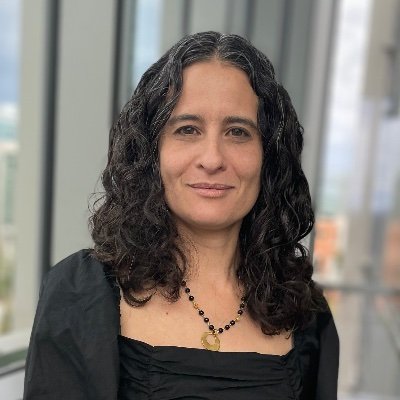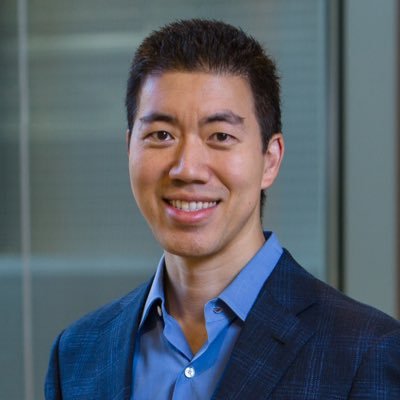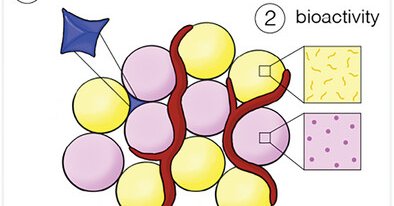
Tatiana Segura
@seguralab
Followers
4K
Following
1K
Media
308
Statuses
874
A simple biomaterials lab trying to use material-cell interactions to unlock the regenerative capacity of tissues.
Duke University
Joined July 2009
I discuss the urgent crisis from the loss of federal support of science in the US and recent clinical gene editing breakthroughs with @WalterIsaacson & @amanpour on @AmanpourCoPBS, airing on @PBS tonight at 11 pm ET, and on @cnni earlier today. Pls share! https://t.co/cyVZpAwJiq
861
330
1K
Excited to be part of this year's society for biomaterials meeting #SFB2025. Check out the Segura lab talks that will be going on this week! Hope to connect with many of you at SFB.
0
1
36
Congratulations Tosh! Chilkoti Receives 2025 Technology Innovation and Development Award. https://t.co/zljt0LuRn3
pratt.duke.edu
Ashutosh Chilkoti was recognized by the Society for Biomaterials for his pioneering work in protein-resistant polymer coatings and protein biomaterials
0
0
13
Also, I am posting now in the other place... likely less posting here.
0
0
2
Congratulations Alex and team!! This is also our first publication collaborating with the @GerechtLab! Thank you for your input and providing the ECFC used in this work!
1
0
4
She found that heterogeneous MAPS (containing multiple #HMP types) can guide vasculogenesis across particles rather than cell wrapping around the particle! Celll preferential transverse HPMs of that are different from each other. She also has beautiful graphic and figures❣️
1
0
0
New publication 🚨! Fantastic graduate student ✨@aalexaandersonn 's ✨final publication is out in Advanced Functional Materials! In this work Alex studied how to achieve vasculogenesis in #MAPS with no supporting matrix (as typically done).
advanced.onlinelibrary.wiley.com
Both the microstructure and the spatial presentation of bioactive cues are tunable properties in microporous annealed particle (MAP) scaffolds responsible for guiding cell responses. When optimized,...
3
3
28
1
0
3
The photo is at the Quin a very fun club. Also in the photo is @DrRituRaman my amazing host during my visit. Thank you so much for the invite and great visit. Love learning about your research!
1
0
3
Met @CarlosMPortela yesterday during my visit to @MITMechE. Excited to learn about his materials and science, but also that he is Colombian and knew of me thanks to the amazing Colombian biomaterials community we have. @AnaMaPorras @BrianAguado @SantiCorreaPhD please meet Carlos!
2
2
51
Super proud of✨ @EmmaCWhitehead ✨giving her first podium presentation at #BMES2024. She worked diligently to collect and analyze her data to have a complete story that characterize the immune response after stroke via spectral flow with and without #MAPgel #MAPS injection❣️
#BMES2024 was a blast! So exciting to give the first conference talk of my PhD! Very grateful to my @seguralab labmates who supported me.
0
2
49
You can find this and all other manuscripts in the special issue in our MAP timeline (which we try hard to keep updated) https://t.co/vErhogHs32 All articles in this issue have a midnight blue background😀editorial: https://t.co/7CYh6mOCp2
1
0
1
Self assembly allows for more even cell distribution and greater scaffold dynamic reassembly.
1
0
0
Dextran-methacrylate + RGD microgels by microfluidics. Cells anneal the microgels by integrin interactions at high seeding densities to form biologically annealed scaffolds. Storage modulus of the construct is cell density dependent.
1
0
0
Next up, is the cover article by the amazing labs of 💫@DeLaporte_Lab 💫 and Andrij Pich. https://t.co/oFrIFOcc6F
advanced.onlinelibrary.wiley.com
Macroporous annealed particle scaffolds are assembled by cell-induced self-organization in combination with dextran-based microgels without the need for chemical interlinking steps. Different...
1
1
9
Excited to host Jason Burdick @BurdickLab at Duke today for the Center for Biotechnology and Tissue Engineering seminar series! We stop by the Segura lab to meet some of our amazing team.
0
1
86
You can find this and all other manuscripts in the special issue in our MAP timeline (which we try hard to keep updated) https://t.co/vErhogHs32 All articles in this issue have a midnight blue background😀editorial: https://t.co/7CYh6mOCp2
0
0
1
Cavities created result in increased porosity and corresponding increase in cell (myofibroblast and luekocyte) infiltration without exogenous bioactive stimulus.
1
0
0
Crescent shaped microgels (PEG-VS/dithiol) are formed by aqueous two phase separation via microfluidics. Gelatin is used as a sacrificial template to create internal cavity.
1
0
0
As always very beautiful and exciting work mixing microfludic advances with biological impact.
1
0
0





